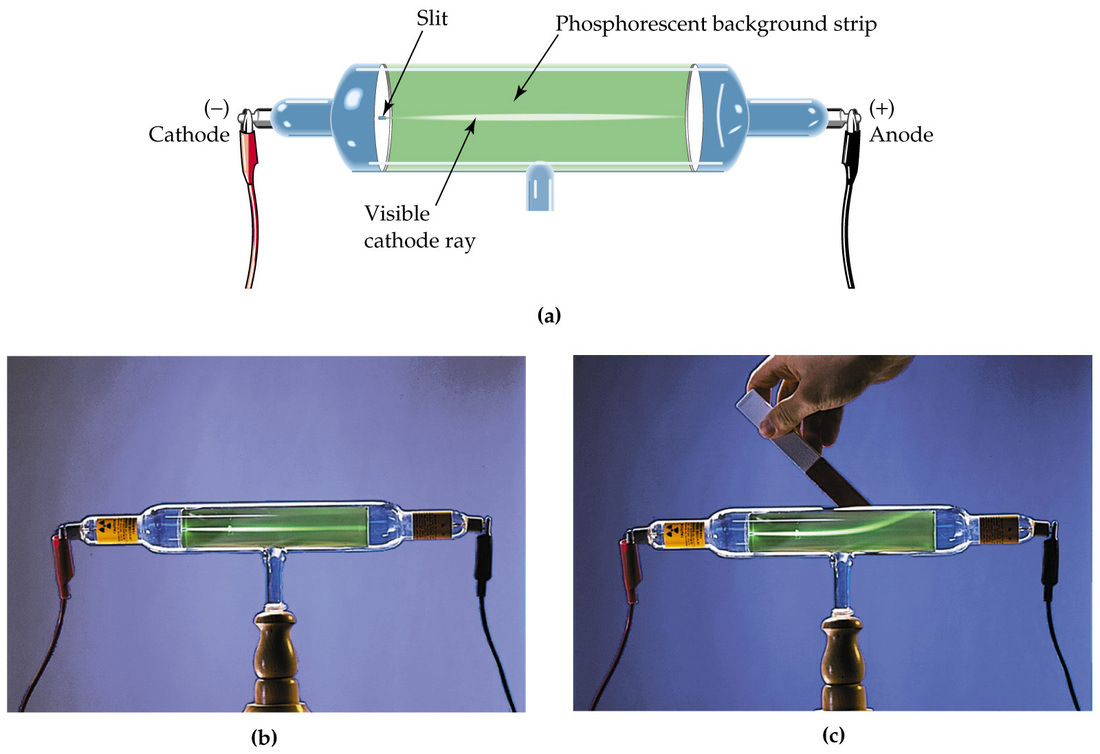

In other words, the ‘valve’ lets current through one way, but not the other. You can point out that there is a current when the diode is connected one way round (with the heated element connected to the negative terminal of the supply) and not when it is connected the other way round. With the milliameter in the circuit, you can measure the current for different voltages in each direction. So you should let the class take the measurements 'both ways' with the valve diode.
#RESULTS OF CATHODE RAY EXPERIMENT FREE#
These tiny negative particles are free to move in the metal. You can explain the results of the experiment using the idea of electrons.Positive charge would not flow from a cathode to an anode, whereas negative charges will (being attracted to the positive anode).


The tubes are fragile (and expensive!) and should be handled carefully. See Topics in Safety (ASE 2001), Chapter 17. Post-16 students may undertake the practical with supervision. Students should observe well away from the apparatus when it is being used. The practical work with HT supplies should only be undertaken by teachers with good knowledge of HT electricity and the dangers. All HT connections should be made with the HT switched off, and no adjustments made to the HT connections or wires once the HT is switched on. Any meter used in the HT circuit should be a type rated for the voltage used, and with shrouded connectors. The HT connectors should be the shrouded type so that accidental contact is highly unlikely. It is essential that all HT connectors and cables are rated at the voltage to be used. HT (high tension) power supplies (generally supplying voltages up to 400 V) can cause fatal electric shock. Demonstration meter with a centre zero dial, - 2.5 mA.Power supply, 6.3 V, AC, for the heater filament (this is often included on the HT supply).You can also use the apparatus to demonstrate a valve diode – a device that lets the current flow in just one direction. The main purpose of this experiment is to explain the principle of an electron gun. The deflection tube has the advantage that you can, if you want, analyze the shape of the path. Most of these ideas can be demonstrated by either a fine beam tube or a deflection tube. Beams of electrons or cathode rays have applications – like televisions and cathode ray oscilloscope (CRO) tubes.Beams of electrons can be deflected in magnetic fields (in circles).Beams of electrons can be deflected in an electric field (in parabolas).Hot cathodes (which are negative) produce beams of electrons.Your choice of which tubes and experiments to use is likely to be determined by what apparatus you have available. However, all electron tubes have the same basic construction: an evacuated glass bulb with a metal plate that is heated by a small filament. They are appropriate for advanced level courses, and sometimes intermediate level courses.Įach of the experiments uses an electron tube (see 'Types of electron tube') with slightly different features from the others. The experiments in this collection demonstrate the existence and some of the properties of electrons and electron beams.


 0 kommentar(er)
0 kommentar(er)
